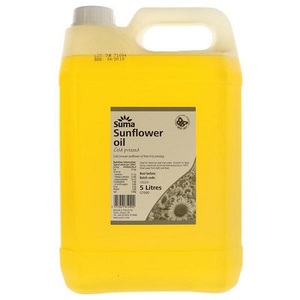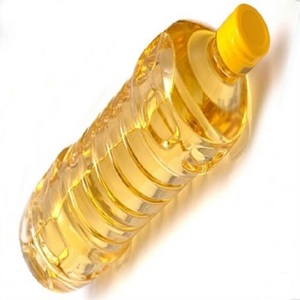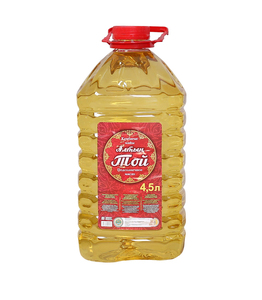(2650 products available)








































































































































































































Recipes oils are essential cooking ingredients that add flavor, texture, and health benefits to dishes. There are different kinds of recipe oils. Some of them are listed below:
Flavor-infused olive oil
Infused olive oil is regular olive oil that is infused with different flavors. The most common infused oil is garlic olive oil. Others are rosemary, chili pepper, and basil garlic olive oil.
Herb oils
Herb oil is an oil made from herbs. Manufacturers blend fresh herbs with oil or steep dried herbs in the oil. They use oils like olive oil, canola oil, or grapeseed oil. They use herbs like basil, thyme, oregano, and rosemary. People use herb oils for salad dressings, marinades, or cooking oil for vegetables.
Chili oil
Chili oil is any oil that has been infused with chili pepper. It has a spicy flavor. People use it in Asian recipes, especially Chinese recipes. They use it as a cooking oil, dipping sauce, or to add flavor to soups and stir-fried dishes.
Garlic oil
Garlic oil is an oil infused with garlic. People use it in salad dressings, marinades, dipping sauces, and cooking oil for vegetables.
Truffle oil
Truffle oil is a finishing oil that adds truffle flavor to dishes. It is an expensive oil with a strong aroma. People use it in pizza, pasta, mashed potatoes, scrambled eggs, and popcorn.
Balsamic vinegar and olive oil
Balsamic vinegar and olive oil make a great combination. The rich flavor of the balsamic vinegar complements the olive oil. People use this combination in salad dressings, marinades, and dips.
Citrus oils
Citrus fruits like oranges, lemons, and grapefruits provide fresh flavors to recipes when combined with oil. People use these oils in salad dressings, marinades, and dips.
Intended Purpose:
One must select oils that suit their needs. For cooking, choosing healthy oils like olive or canola is wise. These oils have good fats for health. If a person wants to bake, they need an oil that will blend well with batter, like coconut oil. Coconut oil has a slight taste that does not impact most baked goods.
Flavor:
Some oils add a flavor to the food, like olive oil, which tastes like olives. Other oils, like canola, have no taste and do not change the food's flavor. Choosing an oil that will not overpower other flavors is essential when cooking.
Nutritional Value:
It is also important to consider the nutrition of different oils. Some have more fat-soluble vitamins, like A, D, E, and K, than others. Coconut oil is high in these vitamins. Palm oil also has many. Olive oil contains healthy fats called monounsaturated fats that can help lower cholesterol when eaten instead of saturated fats.
Smoke Point:
All oils have a smoke point, which is the temperature at which the oil starts to smoke. This can create harmful chemicals and a burnt taste. It is essential to choose an oil with a smoke point higher than the cooking temperature to avoid this.
Cost:
Some oils, like extra virgin olive oil, can be more expensive than others. It is important to consider the price and whether the benefits of the oil outweigh the cost if one plans to use it frequently.
Sustainability:
When choosing oils, it is also important to think about the environment. Some oils are sourced in a way that harms ecosystems or uses too much water. Looking for organic or sustainably harvested oils is helpful. These have less impact on the environment.
How cooks use these oils in their recipes may vary depending on the kind of oil they have. Here are some simple steps to get started.
Prepare the oil
Some oils may need a little bit of preparation before using them in recipes. For example, if a cook is using an oil that has a strong smell or taste, like garlic or onion-infused oil, they need to measure the right amount of oil. This amount is important so that the smell or taste of the oil does not become too strong in the food.
Also, if a recipe says to heat the oil first, the cook must do this in a pan over medium heat. Heating the oil releases the smell or taste of the oil so it mixes well with the other ingredients in the food.
Use the oil in the right way
How cooks use the oil also depends on the type of oil. For example, if they are using oil to replace butter in a recipe, they just need to measure the correct amount. Some oils, like olive oil, only need to be measured in the same amount as the butter. But other oils, like applesauce, need a little extra oil to taste the same as the butter. This extra amount will be in the recipe.
Infused oils can also replace some ingredients in recipes. For example, cooks can use garlic or herb oil instead of garlic or fresh herbs. They just need to measure the correct amount so that the oil's smell or taste does not become too strong.
Finish Cooking
Once cooks use the oil in the recipe, they need to finish cooking the food. They should stir the oil well with the other ingredients so it mixes properly. Then, they should follow the cooking times in the recipe. They may need to cook the food for a little longer if they use oil instead of butter.
After the food cooks, they should add any more oil from the recipe. Cooks should also taste the food to see if it needs extra salt or pepper. The food is now ready to eat!
Product Safety
When using oils in recipes, it is important to pay attention to product safety. A good rule is to store the oil in a spot that is twice as far away as the heat source. This distance keeps the oil safe from heat, which can make the oil smell or taste bad.
Also, be careful when putting hot food into the oil. Steam from the food can cause splatters. To prevent this, slowly add the food to the pan with the oil or turn off the heat first. Following these safety tips helps keep the oil from smelling or tasting bad, and splatters make cooking easier and safer.
Oils used in recipes have different functions and features that meet various cooking needs. For example, olive oil is known for its health benefits. It has a distinctive taste that improves the flavor of recipes. Coconut oil is an excellent substitute for butter in vegan recipes. It is also well-loved for its unique tropical flavor. Avocado oil has a high smoke point, making it a suitable choice for frying.
Some oils, like sesame oil, have a strong flavor and are used in small amounts to enhance dishes. Others, like canola or vegetable oil, have a neutral taste and are versatile in baking, frying, and sautéing.
When choosing an oil for a specific recipe, it is essential to consider its flavor, health benefits, and cooking properties. Some oils are more suitable for high-heat cooking, while others are better for cold dishes or baking. Understanding the functions and features of different recipe oils can help cooks make informed decisions when selecting the best oil for their cooking needs.
There are oils with unique flavors that improve the taste of recipes. Then there are oils that have no taste and can be used for frying, baking, and cooking. Some oils are extracted from seeds, like sesame oil. Others come from fruits, like avocado oil. There are also oils from nuts, like walnut oil. They all have different properties, flavors, and health benefits.
Q1: Which oils are best for frying recipes?
A1: The best oils for frying are canola oil, vegetable oil, and peanut oil. These oils have a high smoke point, which means they can withstand high heat without breaking down. They also have a neutral flavor, so they won't change the taste of the food you're frying.
Q2: Which oil is best for baking recipes?
A2: The best oil for baking is coconut oil. It adds a slight sweetness to baked goods and is a healthy fat. Other options for baking are olive oil, which is good for savory breads and muffins, and avocado oil, which works well in brownies and other chocolate desserts.
Q3: Can essential oils be used in recipes?
A3: Yes, there are many ways to use essential oils in recipes. They can be added to smoothies, used to flavor water, or added to salad dressings. Some popular essential oils for cooking are lemon, lavender, and peppermint.
Q4: How do I find new recipe oils?
A4: A great way to discover new oils for recipes is to experiment with different types. Start by trying a new oil in one of your favorite recipes, then branch out to new dishes. You can also read blogs and follow social media accounts that focus on healthy cooking with oil.
The web search volume for the keyword "recipes oil" has shown a notable decline over the past year, with an average monthly web search volume of 40. Over the last twelve months, web search volume has fluctuated between 20 and 50 web searches per month, reflecting significant variability. The data highlights a substantial three-month and one-year change, each showing a 50% decrease from previous periods.
Analyzing the monthly search trends for "recipes oil," we observe several peaks and valleys. For instance, February and June 2024 saw higher web search volumes at 50, while July and August dipped to lower points at 30 web searches. This trend indicates seasonal variations and possible consumer interest shifts. Notably, the lowest web search volume occurred in November 2024, with only 20 web searches, whereas December 2023 and January 2024 both maintained a steady 40 web searches.
The fluctuations in web search volume for "recipes oil" suggest a complex pattern of consumer interest. Despite the overall decline, specific months show increased interest, possibly tied to seasonal cooking trends or specific events influencing oil usage in recipes. Understanding these patterns can help marketers and content creators tailor their strategies to capitalize on peak interest periods while addressing the decline in other months.